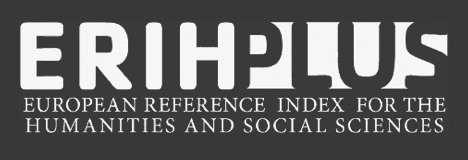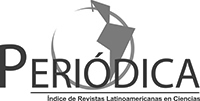Catalogue of the bird of Barrio Centro (Luján, Buenos Aires, Argentina) during the non-breeding season.
DOI:
https://doi.org/10.24215/25456377e003Keywords:
fixed-radius point count, winter, exotic birds, green urban space,Abstract
The conservation of biodiversity requires the knowledge of different habitats and the wild species that inhabit them. Knowing the ornithological diversity of cities allows preserving not only species that inhabit them but also their environment. The aim of this research is to present a preliminary richness inventory of birds that visit and inhabit the urban green spaces (UGS) of the downtown neighborhood of Luján city (Buenos Aires province) during winter. The fixed-radius point count method was used, standing 10 minutes in each point recording the observed species. Twenty eight point counts were placed within the eleven UGS and each point count was surveyed four times. Twenty nine species were recorded, distributed in 8 orders and 20 families. The most represented families were: Columbidae (5 species), Furnariidae (2 species), Tyrannidae (2 species), Turdidae (2 species) and Thraupidae (2 species). The most frequent species were: Milvago chimango, Zenaida auriculata, Furnarius rufus, Pitangus sulphhuratus, Turdus rufiventris, Mimus saturninus and Passer domesticus. Three exotic species were recorded: P. domesticus, Sturnus vulgaris and Columba livia. Greatest species richness and frequency were given at the largest urban green spaces. It is important to preserve cities large urban green spaces and to develop annual updates of bird species inventory through systematic monitoring programs. This way, collected data can be used as an indicator of urban ecosystems quality.References
Chace, J.F. & Walsh, J.J. 2004. Urban effects on native avifauna: a review. Landscape and Urban Planning 74: 46-69.
Clergeau, P., Savard, J.P.L., Mennechez, G. & Falardeau, G. 1998. Bird abundance and diversity along an urban-rural gradient: a comparative study between two cities on different continents. Condor 100: 413-425.
Código de Ordenamiento Urbano del Partido de Luján. 2015. Ordenanza N° 6548. En Línea: http://www.lujan.gov.ar/index.php/es/ante-proyecto-cou-2014 Consultada el 15-04/2016
Devictor, V., Julliard, R., Clavel, J., Jiguet, F., Lee A. & Couvet, D. 2008. Functional biotic homogenization of bird communities in disturbed landscapes. Global Ecology and Biogeography 17: 252-261.
Germain, P., Cuervas, Y., Sanhueza, C., Tizón, F., Loydi, A., Villalobos, A., Zapperi, G., Vázquez, B., Pompozzi, G. & Piován M. 2008. Ensamble de aves en zonas con diferente grado de urbanización en la ciudad de Bahía Blanca. Buenos Aires, Argentina. BioScriba 1(2): 35-45.
Girini, J.M., Palacio, F.X., Del Huerto, M. del C. & Kuzmanich, N. 2014. Selección de dormideros por el estornino pinto (Sturnus vulgaris) en La Plata, Buenos Aires, Argentina. Hornero 29(1): 23-28.
González, M. 2009. Avifauna Urbana en América Latina: Estudio de Caso. Centro de Estudios Agrarios y Ambientales. Gestión Ambiental (Valdivia) 17: 55-68.
INDEC. 2010. Censo Nacional de Población, Hogares y Viviendas 2010. Provincia de Buenos Aires, resultados definitivos por partido. En Línea: http://www.ec.gba.gov.ar/estadistica/librocenso2010.pdf Consultada el 15-04/2016
Leveau, L.M. & Leveau, C.M. 2004. Comunidades de aves en un gradiente urbano de la ciudad de Mar del Plata, Argentina. Hornero 19(01): 13-21.
Marzluff, J.M., Bowman, R. & Donnelly, R. 2001. A historical perspective on urban bird research: trends, terms, and approaches. En: Marzluff, J. M., Bowman, R. & Donelly, R. (eds.): Avian Ecology and Conservation in an Urbanizing World, pp. 1-17. Kluwer Norwell.
McDonnell, M.J. & Pickett, S.T. 1990. Ecosystem structure and function along urban-rural gradients: an unexploited opportunity for ecology. Ecology 71: 1232-1237.
MacGregor-Fors, I., Morales-Pérez, L., Quesada, J. & Schondube, J.E. 2010. Relationship between the presence of House Sparrows (Passer domesticus) and Neotropical bird community structure and diversity. Biological Invasions 12: 87-96.
Narosky, T. & Izurieta, D. 2010. Aves de Argentina y Uruguay - Birds of Argentina & Uruguay: Guía de Identificación edición total ? a field guide total edition -16ª ed.- Vazquez Mazzini Editores. Buenos Aires, Argentina. 427 pps.
Nowak, D., Dwyer, J. & Childs, G. 1997. Los beneficios y costos del enverdecimiento urbano. En: CEPAL (eds.) Áreas verdes urbanas en Latinoamérica y el Caribe: 17-38, CEPAL, México.
Perepelizin, P.V. & Faggi, A.M. 2009. Diversidad de aves en tres barrios de la Ciudad de Buenos Aires. Multequina Latin American Journal of Natural Resources 18: 71-85.
Ralph, C.J., Geupel, P.P., Martin, T.E, DeSante D.F. & Milá B. 1993. Handbook of Field Methods for Monitoring Landbirds. General Technical Report PSW-GTR-159. Albany, CA: Pacific Southwest Station, Forest Service, U.S. Departament of Agriculture. 41 pps.
Remsen, J.V., Jr., Areta, J.I., Cadena, C.D., Jaramillo, A., Nores, M., Pacheco, J.F., Pérez-Emán, J., Robbins, M. B., Stiles, F. G., Stotz, D. F., & Zimmer, K. J. Version [2016]. A classification of the bird species of South. American Ornithologists' Union. En Línea: http://www.museum.lsu.edu/~Remsen/SACCBaseline.htm Consultada el 15-04/2016
Sierra Vásquez, M.A. 2012. Ciudad y fauna urbana. Un estudio de caso orientado al reconocimiento de la relación hombre, fauna y hábitat urbano en Medellín. Tesis de grado de la Facultad de Arquitectura, Universidad Nacional de Colombia, sede Medellín, 66 pps.
Sorensen, M., Barzetti, V., Keipi, K. & Williams, J. 1998. Manejo de las áreas verdes urbanas, Documento de Buenas Prácticas, Washington, BID. 68 pps.
Downloads
Published
Issue
Section
License
La publicación en la RMLP se realiza bajo los términos de la licencia de uso y distribución Creative Commons BY-NC-SA 4.0 para Argentina (https://creativecommons.org/licenses/by-nc-sa/4.0/) que permite a terceros la distribución, la copia y la exhibición del artículo siempre que citen la autoría del trabajo, la publicación en la RMLP, número concreto y las páginas en la que encontraron la información. No se puede obtener ningún beneficio comercial y no se pueden realizar obras derivadas con fines comerciales que no autorice la editorial. Si se remezcla, transforma o construye sobre el material, deben distribuir sus contribuciones bajo la misma licencia que el original.
La puesta a disposición del artículo en la RMLP supone para los autores argentinos el cumplimiento de lo establecido en la Ley 26899 de Creación de Repositorios Digitales Institucionales de Acceso Abierto, Propios o Compartidos, del 13/11/2013 en su artículo 5º, en lo relativo a la obligatoriedad de facilitar en acceso abierto los resultados de investigaciones financiadas por agencias gubernamentales y de organismos nacionales de ciencia y tecnología del Sistema Nacional de Ciencia, Tecnología e Innovación.









